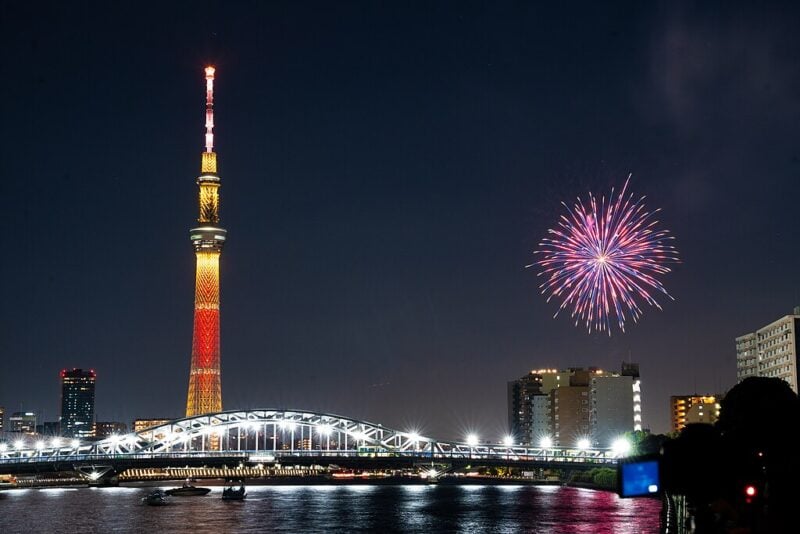Tokyo’s summer activities blend tradition and modern breakthroughs, even as temperatures climb in Japan’s bustling capital. You might wonder if visiting during the hottest months is worth it—the answer is absolutely yes!
Summer transforms Tokyo into a vibrant celebration with stunning fireworks and refreshing indoor spots, despite the heat and humidity. The best summer activities cater to every interest, from Ueno Park’s peaceful gardens to teamLab Planets’ futuristic wonders. Families need not worry—Tokyo offers countless kid-friendly activities.
Tokyo Disneyland’s special seasonal shows lead the pack of family attractions. The city also provides many indoor venues that offer cool shelter and authentic Japanese experiences when temperatures soar.
This piece highlights 10 must-visit spots that make Tokyo an essential summer destination, whatever the forecast shows. Tokyo’s summer scene has something extraordinary waiting for you, whether you seek cultural immersion, family entertainment, or air-conditioned adventures.
1. Ueno Park
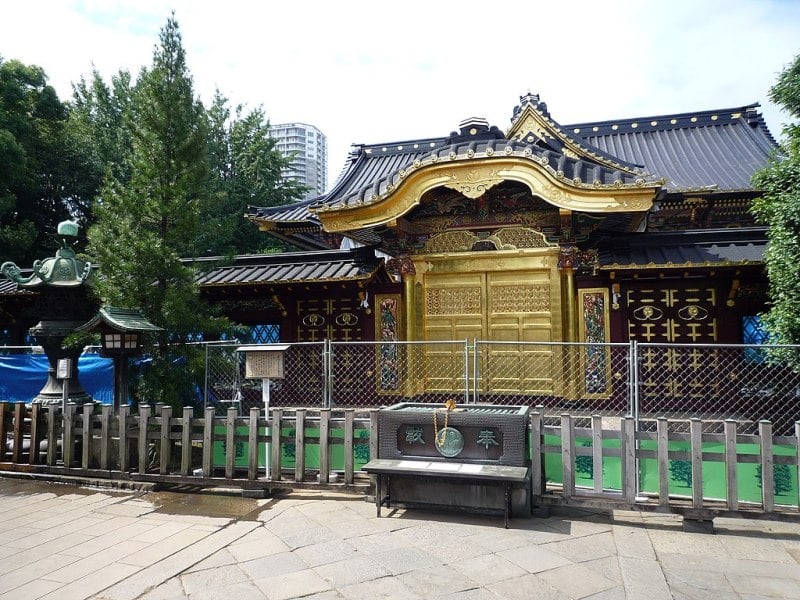
Ueno Park spreads across 54 hectares in central Tokyo – that’s about the size of 11 Tokyo Domes. This beautiful green space started as part of Kaneiji Temple in the Edo Period and became one of Japan’s first Western-style public parks in 1873.
Ueno Park highlights
The park serves as Tokyo’s cultural heart with several world-class venues:
- Tokyo National Museum – Japan’s oldest museum showcases treasures from Japanese and Asian history
- Ueno Zoo – Japan’s first zoo houses over 3,000 animals, with giant pandas as star attractions
- Shinobazu Pond – A beautiful water body split into three parts: Lotus Pond, Boat Pond, and Cormorant Pond
- Historic Temples and Shrines – The stunning Toshogu Shrine, rebuilt in 1651, shows off gold decorations and 48 bronze lanterns
Summer brings a magical transformation as lotus flowers blanket Shinobazu Pond. Visitors can take boat rides on the pond to see the park’s lush greenery from different angles.
Ueno Park summer events
The Ueno Summer Festival (Ueno Natsu Matsuri) lights up Tokyo’s summer calendar for about a month from mid-July. The festival buzzes with activities:
- Paper Lantern Festival – Lanterns create a magical glow as they float on Shinobazu Pond
- Taiko Drum Performances – Traditional Japanese drums echo near the pond
- Food and Game Stalls – Japanese festival favorites like yakisoba and kakigori (shaved ice) tempt visitors
- Antique Market – Daily markets at Shinobazu Pond’s banks offer unique treasures
The festival’s charm peaks with 2,000 wind chimes decorating Hasumi Deck near Shinobazu Pond, creating perfect summer vibes.
Ueno Park accessibility
The park sits right next to JR Ueno Station – just a 2-minute walk from the Park Exit. Tokyo Metro users can reach it in about 5 minutes from Ueno Station on the Ginza and Hibiya lines.
The park’s information centers provide maps with barrier-free routes despite some sloping areas. These helpful guides come in English, Chinese, and Korean. Wheelchair-friendly restrooms dot the park, complete with audio guidance, Braille, and ostomate facilities.
Wheelchair users can enjoy close-up views of Shinobazu Pond thanks to a smooth, level pedestrian deck. The park’s museums also welcome everyone with tactile maps and free wheelchair rentals.
2. Odaiba
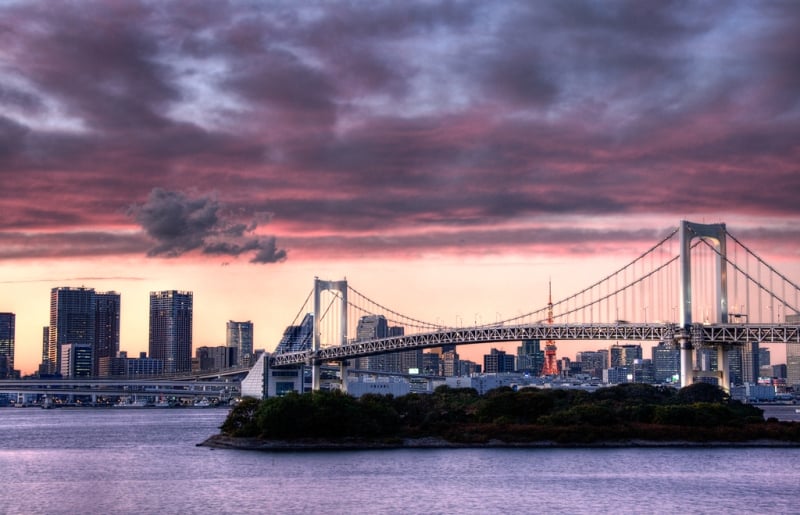
Odaiba, a futuristic island rising from Tokyo Bay, offers the perfect summer getaway that blends entertainment, shopping, and beautiful bay views. This fascinating destination started as defensive forts during the Edo Period and has grown into one of Tokyo’s favorite leisure spots.
Odaiba attractions
Visitors of all ages will enjoy these remarkable attractions:
- Rainbow Bridge – Tokyo Bay’s iconic symbol lights up beautifully at night and connects Odaiba to the rest of Tokyo
- Life-sized Unicorn Gundam Statue – This impressive 19.7-meter robot from the Mobile Gundam series transforms into “Destroy Mode” four times daily at 11:00, 13:00, 15:00, and 17:00
- Fuji TV Building – You’ll spot this architectural marvel by its 1200-ton suspended sphere that features an observation deck with sweeping views
- Odaiba Marine Park – This rare white-sand beach stretches about 800 meters and lets you enjoy volleyball and other water activities
A replica of the Statue of Liberty has been a favorite photo spot among visitors since 2000.
Odaiba indoor activities
Odaiba’s air-conditioned spaces make it one of Tokyo’s best summer destinations:
Tokyo Joypolis, Japan’s largest indoor theme park, features three floors packed with over 20 attractions including arcade games, exciting rides, and a roller coaster. Adult tickets start at ¥1,200, while passport tickets that include unlimited rides cost ¥5,500.
DiverCity Tokyo Plaza and Aqua City Odaiba pack hundreds of shops, restaurants, and entertainment options. DiverCity stands out with Gundam Base Tokyo, a specialty shop for plastic models.
Families love LEGOLAND Discovery Center with its LEGO factory tours, building workshops, and 4D theater – perfect for summer days with kids.
Miraikan (National Museum of Emerging Science and Innovation) showcases state-of-the-art science and technology through interactive exhibits that shape our future.
Odaiba pricing
Smart visitors can save money with special passes:
The Odaiba Excursion Ticket lets you enter participating venues once over one or two days. This includes Tokyo Joypolis, Odaiba Takoyaki Museum, Tokyo Trick Art Museum, Telecom Center Observation Deck, and Madame Tussauds Tokyo.
Individual attraction prices vary:
- Tokyo Joypolis: ¥1,200-1,500 for admission; passport tickets (including rides) ¥5,500-5,800 for adults
- Evening passports start at ¥4,500 – great for late-day visits
- Shopping malls and public spaces welcome visitors free of charge, with plenty of seating areas to rest or enjoy snacks from convenience stores
Birthday celebrants get special discounts at select attractions, making Odaiba an excellent choice for celebration trips.
3. Tokyo Disneyland
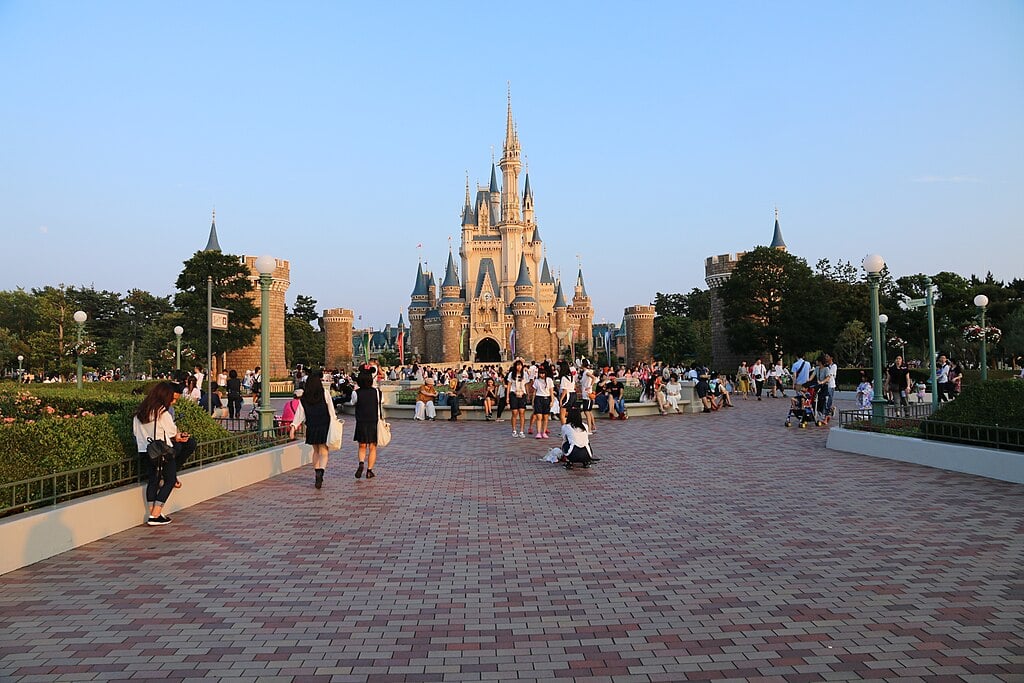
Families can experience unforgettable tokyo summer activities at Tokyo Disneyland. The park becomes a refreshing haven with its special “Summer Cool-off” program from July 2 to September 15, 2025. Disney magic blends with traditional Japanese summer festival elements to create one of Tokyo’s best summer activities that visitors of all ages will love.
Disneyland summer shows
The park’s summer entertainment features these exclusive attractions:
- Baymax’s Mission Cooldown brings back the lovable healthcare robot from Big Hero 6. He patrols the parade route three times daily and sprays refreshing mist on overheated guests
- Country Bear Theater: Vacation Jamboree delivers a special summer show where 18 charismatic bears delight visitors with humorous country and western performances
- Sansui! Summer Beat brings Mickey and Friends to large barges in front of Cinderella Castle. Water cannons soak the audience—perfect to beat the summer heat
The original summer celebration embraces Japanese culture. Mickey and Minnie wear yukata (summer kimonos) while Japanese lanterns decorate the park beautifully.
Summer activities for kids in Tokyo
Tokyo Disneyland’s cooling options are designed specially for children:
“Get Soaked” Toontown lets kids play in several water areas. They can enjoy cool mist and spraying water at the Trolley Barn, Toontown Fire Department, and Fireworks Factory. The popular “Splash Mountain ‘More! Soaking wet MAX” leaves riders much wetter than the regular version.
Summer brings special treats to the park. Kids love the shaved ice topped with cute Baymax mochi in strawberry and blue syrup flavors. The Baymax-designed cold udon noodles are a unique treat too.
Ticket pricing
Visitors can choose from these ticket options:
- 1-Day Passport: ¥7,900-¥10,900 (Adult), ¥6,600-¥9,000 (Junior), ¥4,700-¥5,600 (Child)
- Early Evening Passport (entry from 3:00 PM): ¥6,500-¥8,700 (Adult), ¥5,300-¥7,200 (Junior), ¥3,800-¥4,400 (Child)[174]
- Weeknight Passport (entry from 5:00 PM on weekdays): ¥4,500-¥6,200 (all ages)[174]
Summer visitors can use the special 1-Day Park Hopper Passport (Limited Period). This pass allows access to both Tokyo Disneyland and Tokyo DisneySea on the same day. Prices range from ¥9,100-¥18,900 based on age category.
Experts suggest planning a 4-day visit to fully enjoy Tokyo Disney Resort’s attractions without rushing.
4. Meiji Shrine and Yoyogi Park

A sacred forest retreat stands between Tokyo’s fashionable districts of Harajuku and Shibuya, offering a break from the summer heat. Tokyo’s largest public green space combines Meiji Shrine and Yoyogi Park to create a peaceful sanctuary in the bustling city.
What to see at Meiji Shrine and Yoyogi Park
Massive wooden torii gates, towering 12 meters high, welcome visitors to Meiji Shrine. The shrine, dedicated to Emperor Meiji and Empress Shoken in 1920, reveals several treasures as you explore its grounds:
- Celebration and good fortune shine through walls lined with donated sake barrels
- The Meoto Kusu (Camphor Tree Couple) shows 800 years of intertwined growth, representing marital harmony
- A “power spot” called Kiyomasa’s Well holds purifying properties
- Beautiful iris fields bloom in June throughout the peaceful Inner Garden
The spacious Yoyogi Park features wide lawns perfect for picnics, serene ponds, and forest paths ideal for walks. Summer weekends buzz with activity as flea markets and cultural festivals take over the park grounds.
Why visit Meiji Shrine and Yoyogi Park in summer
These locations rank among Tokyo’s best summer destinations for several reasons:
The shrine’s forest creates natural cooling with its 100,000 trees spanning 365 species. Visitors can escape the heat under the dense canopy’s shade.
The park comes alive during summer months with festivals. Traditional performances highlight the Meiji Shrine Autumn Grand Festival starting in late summer, including yabusame (horseback archery) and aikido demonstrations.
Families with kids can enjoy various activities here, from bike rides on scenic paths to relaxed picnics beneath shady trees.
Nearby attractions
Harajuku’s Takeshita Street sits just minutes away with its quirky shops and vibrant fashion scene. This street has become one of Tokyo’s most popular shopping spots.
The Meiji Jingu Museum, designed by prominent architect Kengo Kuma, showcases historic artifacts from the shrine and the imperial couple’s personal items.
Jingu Gaien attracts visitors with its ginkgo-lined avenue that transforms into a golden tunnel when autumn begins.
5. TeamLab Planets Tokyo

TeamLab Planets Tokyo stands as a magical refuge where art meets technology to create an otherworldly experience, especially during unbearable summer heat. This innovative digital art museum in Tokyo’s Toyosu district has become one of the most popular tokyo summer activities since it opened in July 2018.
Indoor activities Tokyo summer
TeamLab Planets gives visitors the perfect escape from Tokyo’s sweltering summer temperatures. The museum takes a different approach from traditional venues by letting visitors physically interact with the artworks. The air-conditioned space makes it a perfect destination as outdoor temperatures climb.
You’ll find yourself wading through knee-deep water surrounded by digital projections across four massive exhibition spaces and two gardens. The “Waterfall of Light Particles” creates cascading digital waterfalls that react to your movements. This offers a refreshing sensory experience away from the actual summer heat.
Immersive experience at teamLab
TeamLab stands out from other museums through its “body-immersive” approach. Visitors walk barefoot and wade through knee-deep water while digital koi fish swim around their legs. The line between artwork and visitor disappears, creating a shared experience with others and the environment.
Signature installations include:
- “Infinite Crystal Universe” – A breathtaking kinetic installation with thousands of LED lights that create the illusion of an endless starry universe
- “Floating Flower Garden” – A dynamic digital garden where projected flowers react to your movements and create an ever-evolving floral landscape
These installations continuously change based on human interaction, which means no two visits are similar.
Ticket info for teamLab Planets
You’ll need to buy admission tickets ahead of time through the official website or authorized resellers. Prices vary by age:
- Adults (18+): 3,600 JPY
- Junior/High School Students: 2,800 JPY
- Children (4-12): 1,500 JPY
- Under 3: Free
- Disability discount: 1,800 JPY
The museum opens daily from 9:00 AM to 10:00 PM with entry slots every thirty minutes. Most visitors spend 2-3 hours to see all installations. Weekdays offer a less crowded experience, particularly during the first and last two hours.
Make sure to wear clothes suitable for wading in water. Note that pregnant women cannot access certain areas due to safety concerns. The facility welcomes wheelchair users and provides specialized chairs inside.
6. Asakusa and Sensoji Temple

The traditional shitamachi (downtown) district of Tokyo, Asakusa fascinates visitors with its glimpse into old Edo. Senso-ji Temple, Tokyo’s oldest Buddhist temple, stands at its center and attracts about 30 million worshippers and tourists each year.
Historical significance of Asakusa
Asakusa started as a small fishing village in the Sumida River estuary. Its story began in 628 CE with an amazing find by two fisherman brothers, Hinokuma Hamanari and Hinokuma Takenari. They pulled up a small golden statue of Kannon, the Buddhist goddess of mercy, in their fishing net. They tried several times to put it back in the water but showed it to their village chief who knew its importance. This discovery led to Senso-ji Temple’s creation, and Asakusa grew around it.
Senso-ji Temple’s importance grew when Tokugawa Ieyasu made it the shogunate’s prayer temple in 1590. Edo became the world’s most populated city by the late 18th century, and Asakusa emerged as its cultural heart.
Summer festivals at Senso-ji
Sanja Matsuri leads Asakusa’s summer celebrations as one of Tokyo’s three major festivals. Nearly two million people attend this lively event on the third full weekend in May to honor Senso-ji’s three founders. About 100 portable shrines (mikoshi) parade through Asakusa’s streets during the festival.
The Hozuki Market (July 9-10) brings a special Japanese summer feeling as vendors sell potted lantern plants across the temple grounds. These festivals are a great way to get real cultural experiences in Tokyo during summer.
Shopping and food in Asakusa
Nakamise Shopping Street runs 250 meters from Kaminarimon Gate to the temple’s main hall. Its 89 shops sell traditional crafts and tasty street foods. You’ll find:
- Traditional treats – Ningyo-yaki (bean-filled sponge cakes), kaminari-okoshi (sweet puffed rice), and fresh melon pan
- Authentic souvenirs – Folding fans, chopsticks, traditional sandals, and kimono
Asakusa’s food scene goes beyond Nakamise. Japan’s oldest Western-style bar (Kamiya Bar) sits here, along with famous tempura at Daikokuya, 136 years old. Families can escape Tokyo’s summer heat in air-conditioned shops and restaurants while experiencing traditional Japanese culture.
7. Tokyo Skytree
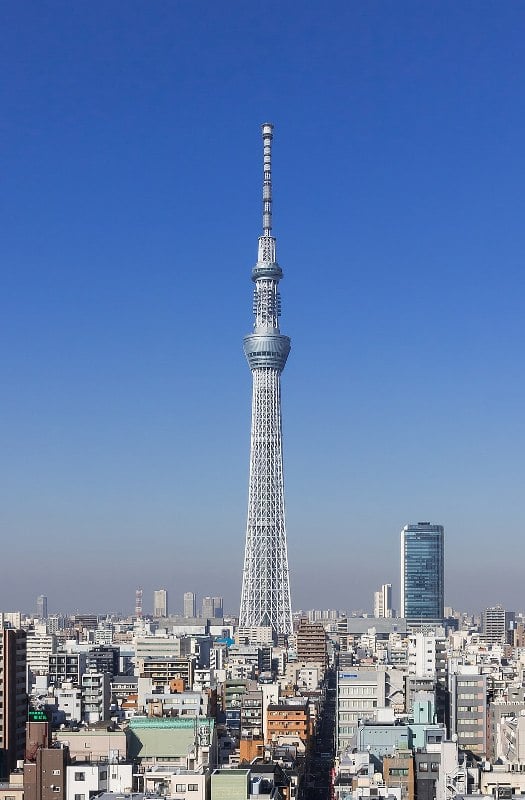
Tokyo Skytree pierces the city’s skyline at 634 meters, making it Japan’s tallest structure. This architectural marvel gives visitors a perfect escape from summer heat as one of the best indoor activities tokyo summer destinations. The tower doubles as a broadcasting facility and an amazing spot to take in the vast metropolis below.
Observation decks at Tokyo Skytree
Two main observation areas give visitors completely different experiences. The Tembo Deck sits at 350 meters and spreads across three levels. Its floor-to-ceiling windows provide clear 360-degree views. Visitors can test their courage on the glass floor section with its straight-down views. The Musashi Sky Restaurant serves delicious French-Japanese fusion cuisine among other amenities.
The Tembo Galleria takes the experience even higher at 450m. Visitors walk through a glass tube that creates a floating-in-sky sensation. This “skywalk” ends at Sorakara Point (451.2m), Japan’s highest observation point open to the public.
Summer night views from Skytree
Night transforms Tokyo Skytree into one of the best summer activities in Tokyo. The city’s nightscape looks uniquely snow-white because of Japan’s widespread fluorescent lighting. This creates a seemingly endless ocean of light that stretches toward the horizon.
Summer evenings bring dramatic changes to the view. The “golden hour” paints the sky with sunset colors. The “blue hour” bathes the city in magical azure tints before darkness takes over. The Skytree Round Theater enhances this experience by projecting dynamic images on 2-meter-high window glass.
Skytree Town attractions
Tokyo Skytree Town provides plenty of summer activities for kids in Tokyo beyond the tower itself. Tokyo Solamachi sits at the base with more than 300 shops and restaurants. The Sumida Aquarium draws crowds with its 350-ton indoor tank showcasing penguins and fur seals. The Konica Minolta Planetarium “TENKU” amazes visitors with immersive stellar projections.
Japanese pop culture fans will love the complex’s character shops with their exclusive merchandise. A unique tower-shaped red post box stands at the Tembo Deck (Floor 345). Visitors can send special commemorative postcards from this unusual spot.
8. Shinjuku Gyoen National Garden
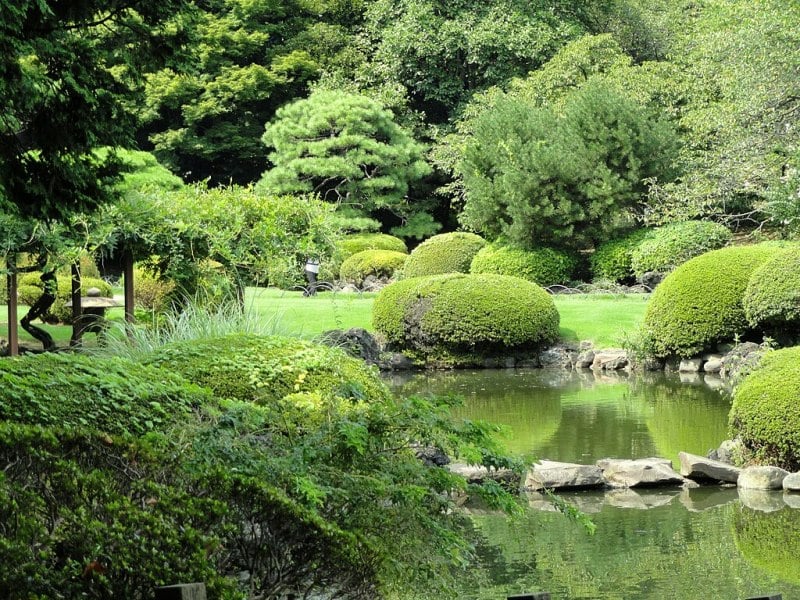
A peaceful imperial oasis sits in the heart of bustling Shinjuku. This stunning garden spans 58.3 hectares (144 acres) with a 3.5 km circumference. What started as a feudal lord’s home in the Edo period evolved into an imperial garden in 1906. The public gained access to this treasure after World War II.
Garden features
The garden’s unique charm comes from blending three distinct styles into one seamless space:
- French Formal Garden – This romantic spot features symmetrical flower beds and roses in abundance. Geometric patterns create elegant views across pristine lawns.
- English Landscape Garden – Open lawns surrounded by cherry trees make perfect spots to relax and enjoy a picnic.
- Japanese Traditional Garden – The garden’s oldest section shows off large ponds with island bridges, carefully trimmed shrubs, and a traditional tea house.
The park’s botanical greenhouse feels like an indoor jungle. Tropical plants, orchids, and rare species thrive in its pond, tropical, subtropical, and desert zones. Visitors often marvel at the massive Himalayan cedars, plane-tree paths, and countless ginkgo trees that make up the garden’s rich plant life.
Best time to visit Shinjuku Gyoen
Summer brings welcome relief from Tokyo’s heat. The garden’s shaded paths stay cooler than the city streets. Each season paints its own picture:
The garden bursts into pink and white when 1,500 cherry trees bloom from late March to early April. Unlike other parks, you won’t find alcohol-fueled parties here.
Fall colors peak from mid-November to mid-December. The Japanese garden’s maple trees put on an amazing show. Early November brings the Chrysanthemum Exhibition where hundreds of perfectly grown flowers take center stage.
Entry fees and access
Adults pay ¥500, seniors (65+) and students ¥250, while kids 15 and under get in free. A ¥2,000 annual pass makes sense if you plan multiple visits.
The gates open at 9:00 AM. Closing times change with seasons: 4:30 PM (October-March), 6:00 PM (March-September), and 7:00 PM (July-August). The garden takes Mondays off except during cherry blossom season (March 25-April 24) and the Chrysanthemum Exhibition (November 1-15).
Three gates welcome visitors: Shinjuku Gate (10 minutes from Shinjuku Station), Okido Gate, and Sendagaya Gate (5 minutes from their stations).
9. Ghibli Museum

The whimsical Ghibli Museum sits in the lush Inokashira Park in Mitaka. This magical place draws visitors into Studio Ghibli animation’s enchanting world and serves as a perfect indoor activities tokyo summer destination for animation fans of all ages. Legendary director Hayao Miyazaki founded this fantastical museum in 2001. The name comes from an Italian word for desert wind, which represents the studio’s vision to bring fresh creativity to animation.
Take a look at some of Hayao Miyazaki best animated movies.
Museum features
Visitors can enjoy these immersive experiences that bring favorite animations to life:
- A three-dimensional zoetrope called “Bouncing Totoro” with characters from My Neighbor Totoro on the bottom floor
- A special cinema that shows original short films you won’t find anywhere else in the world
- A life-sized Catbus from My Neighbor Totoro for children aged 12 and under to play
- “Where a Film is Born” exhibit with a mock-up animation studio filled with books, toys, and wall-to-wall illustrations
- A rooftop garden featuring a five-meter-tall Robot Soldier statue from Castle in the Sky
The museum doesn’t allow photography inside, which adds to its mysterious charm and creates a genuine experience. The building’s design tells its own story – a multi-storied mansion with winding staircases, small doors, and hidden corners that capture Studio Ghibli’s magical universe.
Entry fees and access
The museum limits daily visitors to a few hundred people, so tickets must be bought well ahead of time. These tickets sell out very fast and become available at 10 AM (JST) on the 10th of each month for the next month.
Here are the admission prices:
- Adults (19+): ¥1,000
- Teenagers (13-18): ¥700
- Children (7-12): ¥400
- Young children (4-6): ¥100
- Under 4: Free
Visitors can reach the museum from JR Mitaka Station through a 15-minute walk or by taking a community bus that runs every 15 minutes. Note that you can’t buy tickets at the museum – advance purchase is required.
This air-conditioned wonderland ranks among the best summer activities in Tokyo. It offers a cool escape from the heat while delighting fans with original artwork and animation details. The museum proves to be an ideal summer activity for kids in Tokyo who love Studio Ghibli’s magical worlds.
10. Tokyo Toyosu Manyo club
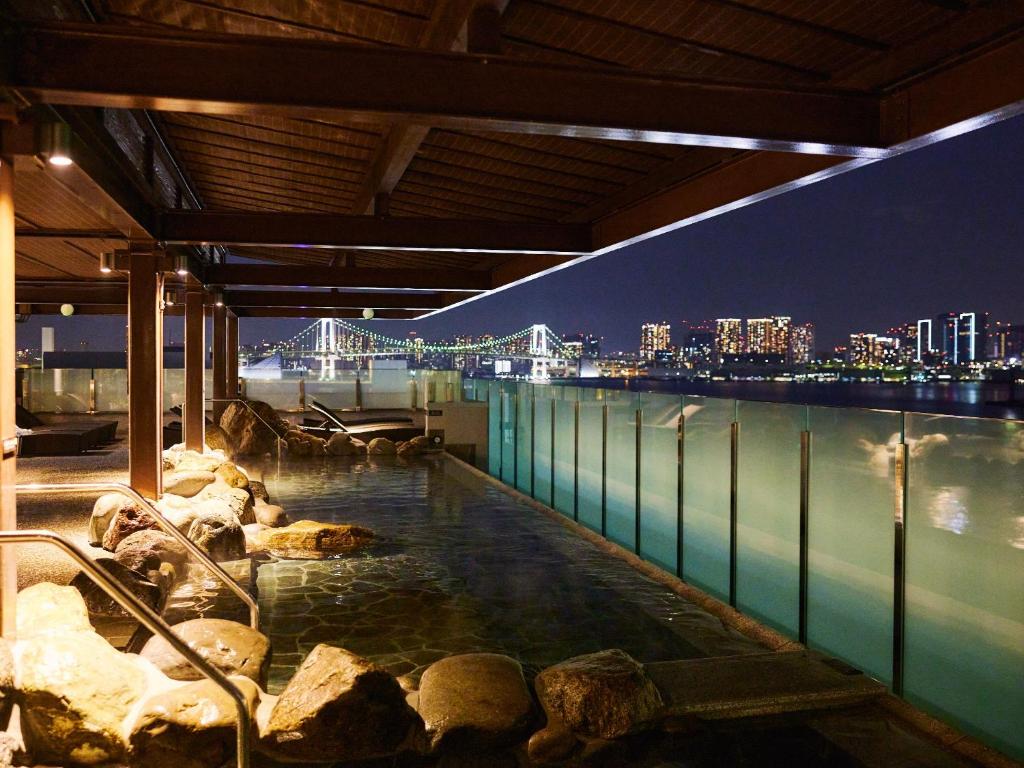
A world of traditional bathing culture exists behind Tokyo’s modern facades. The popular Oedo Onsen Monogatari in Odaiba closed its doors on September 5, 2021, because of the COVID-19 pandemic. Tokyo Toyosu Manyo Club took its place on February 1, 2024, and offers a similar 24/7 onsen bath experience.
This unique place was one of the best indoor activities tokyo summer spots for visitors. Guests would trade their clothes for traditional yukata (summer kimono) and could choose from nine different designs. The atmosphere transported everyone back to the Edo period (1603-1868), creating a truly immersive experience.
The onsen’s main draw was its variety of bathing options. Visitors could enjoy multiple pools that included jet pools, oxygen bubble baths, and open-air barrel baths. Natural hot spring water came from more than a kilometer underground. Guests could relax in the foot bath area or head back to the central hall between soaks.
The place stood out for its festival-like vibe. Lanterns, street food, and games filled the main hall, creating a traditional Japanese summer festival atmosphere. People could enjoy festival favorites like yakisoba, takoyaki, and okonomiyaki while they relaxed in their yukatas.
The regular entry fee was ¥2,720 on weekdays and ¥2,936 on weekends. Smart visitors could save money through several options:
- Early birds paying ¥1,554 could enter between 5-7 AM and stay until 9 AM
- Evening visits after 6 PM cost ¥2,180 on weekdays
- Free shuttle busses ran from major stations
Families looking for a best summer activity in Tokyo can now visit Tokyo Toyosu Manyo Club, which keeps this bathing tradition alive with modern touches.
Akihabara – A Perfect Place for Otaku Fans
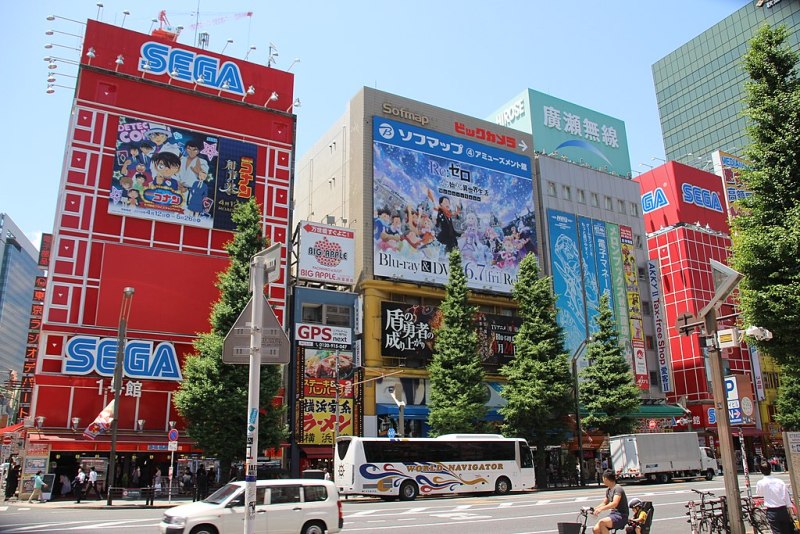
Neon lights, anime characters, and innovative technology make Akihabara, Tokyo’s electric town, an unforgettable urban experience. This vibrant district gives you excellent indoor activities tokyo summer choices when the heat kicks in.
Things to see there
Your first step into Akihabara puts you among buildings decorated with popular anime and manga characters. The area gets its name from a local shrine called Akiba and has evolved into a urban sanctuary for Japanese pop culture fans. The district offers more than just anime:
- Chuo Dori Street pulses as Akihabara’s heart with electronics shops and discoveries at every turn
- GiGO (formerly SEGA) Akihabara buildings pack multiple floors with arcade games
- Kanda Myojin Shrine lets you escape the city’s hustle
Things to buy
Shoppers will find an exceptional selection in Akihabara:
Yodobashi Camera Akiba spans nine floors with everything from electronics and cameras to fashion items, plus restaurants up top. Radio Kaikan houses more than 30 stores selling anime merchandise, while Mandarake specializes in pre-owned manga, figurines, and collectibles.
The Akihabara Gachapon Hall stands out with roughly 500 capsule-toy dispensers that offer items from realistic animals to funny trinkets.
Check out these Anime and Manga shops!
Things to eat
The culinary scene in Akihabara will surprise you. Tonkatsu Marugo dishes out excellent Japanese pork cutlets starting at 2,000 yen. Roast Beef Ōno Akihabara serves tender roast beef bowls from 1,000 yen.
Theme restaurants like maid cafes blend food with entertainment. These spots feature waitresses in anime-inspired maid outfits who serve food while they chat and play games with guests.
Indoor relaxation options
Akihabara’s game centers make a perfect summer activity for kids in Tokyo with hours of air-conditioned fun. The row of game centers near Akihabara Station showcases hardcore gamers testing their skills on arcade machines.
Manga cafes (manga kissa) give you a different way to unwind. You can read comics and watch videos while using the internet.
Pricing and packages
You’ll find experiences at every price point in Akihabara:
- Electronics stores: Browse freely with items at various prices
- Maid cafes: Entry and basic service usually costs 2,400-3,400 yen
- Restaurants: Meals range from 1,000 yen to premium dining at 15,000 yen plus
The best summer activities in Tokyo value comes on Sundays. Chuo Dori closes to traffic from 13:00 to 18:00 (until 17:00 October through March), turning into a walker’s paradise.
Sumida River Fireworks Festival (Sumidagawa Fireworks Festival)
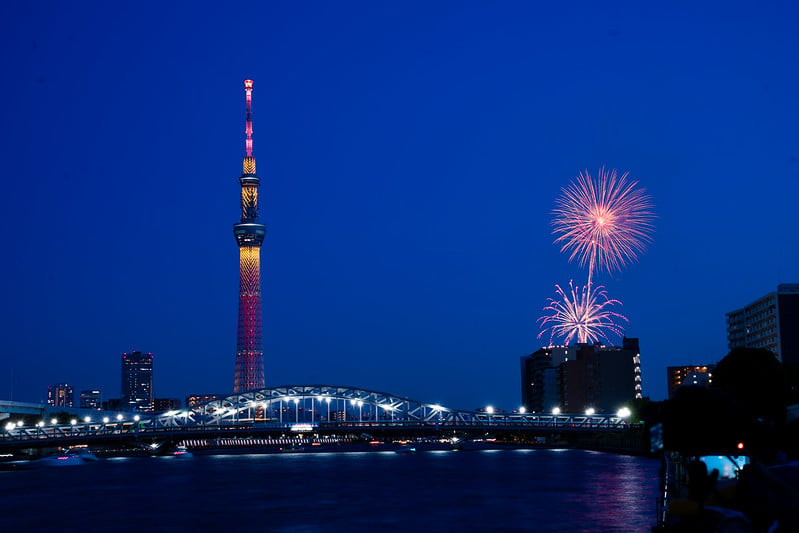
The Sumida River Fireworks Festival lights up Tokyo’s summer skies with an explosive tradition that goes back almost three centuries. This amazing pyrotechnic display ranks among Japan’s oldest festivals and pulls in about a million viewers each year.
Festival overview
The festival started in 1733 as “Ryogoku River Opening.” People created it to remember those who died during the Kyōhō famine and disease outbreak of 1732. Back then, it served many purposes – it helped people mourn their dead, celebrate life, and gave entertainment to the poor. Now, this 90-minute show features about 20,000 fireworks launched from two spots along the Sumida River.
The next festival happens on Saturday, July 26, 2025 from 7:00 PM to 8:30 PM. You’ll find the first launch site between Sakurabashi Bridge and Kototoi Bridge, while the second runs from Komagata Bridge to Umaya Bridge. The festival gets really exciting when rival fireworks companies try to outdo each other with creative designs and impressive displays. The Tokyo Skytree backdrop creates an amazing contrast between old traditions and new architecture.
Best viewing spots
You’ll need a good plan to find the perfect spot:
- Sumida Park sits close to launch sites but gets packed fast—show up by mid-afternoon to get space
- Shiori Park and the north section of Oyokogawa Water Park are less crowded options with good views
- Riverboat cruises give you a special view from the water, but they’re pricey (starting at ¥66,000 with food and drinks)
- Paid seating areas open in early May, starting at ¥7,000
- Tokyo Skytree’s observation deck gives you a bird’s eye view, but you need to book ahead
The festival area’s streets close to traffic and fill up with food vendors and game stalls, which creates a lively summer vibe.
Tips for attending
Get ready well for this popular Tokyo summer event. Show up early—aim for 3:30 PM if you want the best spots. People start showing up by mid-afternoon, and it gets really busy after 5:00 PM.
Remember to bring:
- Water and cooling supplies (July gets hot)
- Leisure sheet or foldable chair to sit comfortably
- Portable charger for your devices
- Trash bags (stick to proper waste disposal rules)
Trains get very crowded. Asakusa and Kuramae Stations see the biggest crowds after the show. You might want to hang around afterward to try some traditional Japanese street food or plan a different way home.
Families looking for Tokyo summer activities will love this festival. Kids and adults often wear traditional yukata (summer kimono), which adds to the festival spirit.
Day trips from Tokyo

Beat the city heat with these cool day trips that give you a unique summer experience close to Tokyo.
Kamakura
A train ride takes you to Kamakura, a coastal getaway just an hour south of Tokyo. This “Little Kyoto” has dozens of shrines and temples scattered across its landscape. The bronze Great Buddha statue at Kotokuin Temple stands 13 meters tall and leaves visitors in awe. The bamboo forest garden at Hokokuji Temple lets you catch cool sea breezes that cut through summer heat and humidity. Direct trains run from Tokyo or Shinjuku stations.
Nikko
UNESCO World Heritage sites and cool mountain air await you in Nikko, about 2 hours from Tokyo. The stunning Toshogu Shrine showcases detailed wood carvings, and you’ll spot the famous “Three Wise Monkeys” among its decorations. The sacred sites lead to Kegon Falls, which drops almost 100 meters and ranks among Japan’s three most beautiful waterfalls. The trip costs JPY2700 one-way from Tobu Asakusa Station.
Lake Kawaguchi
Lake Kawaguchi gives you the best Mt. Fuji views among the Fuji Five Lakes. Summer brings beautiful lavender fields at Oishi Park. The Mt. Fuji Panoramic Ropeway shows off breathtaking views of the area. Busses run from Shinjuku and take about 2 hours, with one-way tickets costing ¥2,000.
Hakone
Natural hot springs and stunning lake views draw visitors to Hakone, 90 minutes from Tokyo. The area’s highlights include a ride on quirky pirate ships during the Hakone Sightseeing Cruise and amazing views of volcanic Owakudani Valley from the Hakone Ropeway. The Hakone Freepass costs ¥5,700 and lets you use unlimited transportation.
Mount Takao
Mount Takao sits just 50 minutes from Shinjuku Station and offers eight hiking trails with different difficulty levels. Clear days reward climbers with Mt. Fuji views from the 599-meter summit. The nearby Keio Takaosan Onsen Gokurakuyu hot spring helps you relax after the hike.
Izu Peninsula
This volcanic peninsula reaches 60 kilometers from mainland Honshu and features dramatic coastlines and bubbling hot springs. The JR Tokaido Shinkansen gets you to Atami in under an hour. The Jogasaki Coast’s 9-kilometer trail shows off volcanic formations and wildlife-rich forests.
For more day trip ideas from Tokyo, read our guide.
Conclusion
Summer turns Tokyo into a lively playground with countless ways to mix tradition, new ideas, and cool escapes from the heat. The city strikes a perfect balance between outdoor festivals like the amazing Sumida River Fireworks and cool indoor spaces such as teamLab Planets and Tokyo Skytree. You can plan your perfect summer schedule whatever the weather throws at you.
Families will love Tokyo Disneyland’s special “Summer Cool-off” program and the magical world of the Ghibli Museum. History buffs can wander through Asakusa’s historic streets or relax in Meiji Shrine’s peaceful forest. Akihabara’s neon-lit wonderland of gadgets and pop culture makes tech lovers and anime fans feel right at home.
Tokyo’s summer charm shines through its blend of age-old traditions and new attractions. Each spot gives you a fresh look at Japanese culture, from Ueno Park’s lotus-covered ponds to teamLab’s digital waterfalls.
A refreshing day trip outside the city limits might be just what you need. Lake Kawaguchi offers stunning Mount Fuji views, while Nikko’s mountain breezes provide a natural break from city heat. These spots showcase Japan’s beautiful landscapes just a short trip from Tokyo’s center.
Tokyo’s summer heat and humidity are real, but the city has smart solutions. You’ll find cooling mist sprayers, plenty of shaded spots, amazing indoor attractions, and summer treats like kakigori (shaved ice). These features help you enjoy Tokyo’s summer scene, and that’s why millions of visitors find this season magical even with the high temperatures.
The city’s summer activities create lasting memories for everyone – culture lovers, families, nature enthusiasts, and tech fans alike. Just pack light clothes, drink plenty of water, and get ready to experience the best of Japan’s amazing capital.
